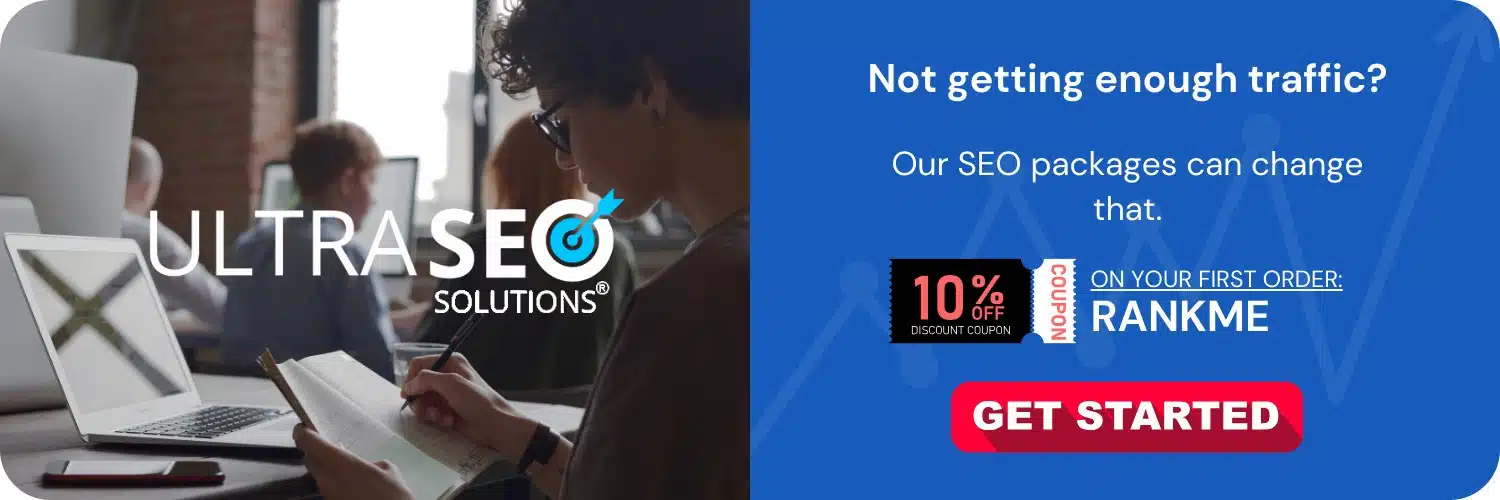
Creating successful landing pages depends on a variety of factors, but when it comes to SEO best practices, several key elements stand out: These include optimizing page titles and meta descriptions, ensuring loading speed is fast, using targeted keywords appropriately, incorporating engaging, high-quality content, and building a mobile-responsive design. Now, let’s discuss these in more depth to give you a comprehensive understanding of how to leverage SEO practices for your landing pages.
Understanding SEO for Landing Pages
SEO for landing pages involves a strategic approach that aims not only to attract traffic but also to convert visitors into leads or customers. A well-optimized landing page helps search engines understand the purpose and content of the page, thereby improving its visibility in search results for relevant queries.
Optimize Page Titles and Meta Descriptions
Page titles and meta descriptions are critical because they provide a snapshot of your landing page’s content. Think of your title tag as the first impression you make on potential visitors; it should be concise, descriptive, and include primary keywords for which you want to rank.
Meta descriptions, while not a ranking factor, influence click-through rates by offering a brief summary of what users can expect when they click on your link. Make sure your meta descriptions are enticing and contain a clear value proposition.
Focusing on Load Speed
Page speed is a ranking factor and a critical element of user experience. Slow-loading landing pages frustrate visitors and can lead to higher bounce rates. Use tools like Google’s PageSpeed Insights to identify areas where you can improve your landing page’s speed. Compressing images, minimizing code, and using a content delivery network are all ways to make your landing pages load more quickly.
Keyword Targeting
Keywords remain an essential component of SEO, and landing pages are no exception. Your primary keyword should reflect the core offering of your page and should be included in your headline, subheadings, and throughout the content where relevant. However, beware of keyword stuffing; your usage should be natural and user-focused. Including long-tail keywords can also help capture more specific search queries and attract more qualified leads.
Creating High-Quality Content
Content is the heart of SEO. Even for landing pages, your content must be engaging, informative, and tailored to your target audience. Use persuasive language to guide users towards your call to action (CTA), and ensure your content addresses the needs and interests of your visitors.
Mobile-Responsive Design
With mobile-first indexing, Google predominantly uses the mobile version of the content for indexing and ranking. Hence, if your landing pages aren’t mobile-friendly, it could negatively affect your SEO efforts. Your landing page design should adapt seamlessly to different screen sizes and provide an equally flawless user experience on mobile devices.
Enhancing Visibility and User Experience
SEO isn’t just about the technical aspects; it’s also about making your landing pages appealing and easy to navigate.
Intuitive Navigation and Clean Design
Ensure that your landing page is easy to navigate and free from distracting elements. A clean, clutter-free design helps users focus on the content and the CTA. This approach minimizes friction and may help increase conversion rates.
Effective Use of CTAs
Clear and compelling calls to action are paramount on a landing page. Your CTA should be prominent and convey what you want the user to do next, whether it’s to sign up, make a purchase, download a resource, or contact your business.
Implementing Structured Data Markup
Structured data markup, also known as schema markup, helps search engines understand the content of your landing page and enhances the way your page is represented in SERPs. It can improve the display of your page in search results with rich snippets, which may improve click-through rates.
Including Social Proof
Social proof, such as testimonials, user reviews, and case studies, can significantly enhance the credibility of your offering. Displaying logos of well-known customers or partners and showing awards or recognitions can also add to your landing page’s trust factor.
Building Authority and Backlinks
A strong backlink profile is vital for SEO as it signals to search engines that others vouch for your content. Acquiring high-quality backlinks to your landing page can improve domain authority and help boost your ranking.
Quality Over Quantity
While the number of backlinks is important, the quality of those links is even more crucial. Focus on earning links from reputable, relevant sources within your industry, as these carry more weight with search engines.
Creating Shareable Content
If your landing page content is unique, insightful, and useful, users are more likely to share it organically. This not only enhances the visibility of your landing page but also the potential to attract natural backlinks.
Outreach and Collaboration
Don’t be afraid to reach out to influencers or businesses within your industry for backlinks. You can also propose guest blogging on relevant platforms to gain exposure and increase your landing page’s backlink profile.
Measuring and Analyzing Performance
To ensure that your SEO practices are yielding the desired results, you need to measure and analyze your landing page performance regularly.
Using Analytics to Monitor Traffic and Conversions
Google Analytics and other tools can help you track the traffic coming to your landing page, monitor conversion rates, and understand user behavior. This data is critical for identifying what’s working and what areas need improvement.
A/B Testing
Conduct A/B testing on different elements of your landing page, from headlines and images to CTAs and layout. This method allows you to optimize your page based on real user data, leading to better performance and higher conversion rates.
Continuous SEO Audits
Regularly performing SEO audits can help identify any technical issues that may arise, such as broken links, crawl errors, or outdated sitemaps. Keeping your landing page in tip-top shape is essential for maintaining its ranking potential.
Finishing Thoughts
SEO for landing pages involves a strategic, multifaceted approach that focuses on both attracting visitors and converting them into customers or leads. By optimizing your page titles and meta descriptions, improving load speeds, targeting keywords effectively, producing high-quality content, ensuring a mobile-responsive design, and leveraging the other strategies discussed, you can significantly increase the effectiveness of your landing pages. Remember, the work doesn’t stop once your landing page is live. Ongoing measurement, analysis, and refinement are necessary to stay competitive in the ever-evolving landscape of SEO.
Frequently Asked Questions
What are landing pages and their importance for SEO?
Landing pages are standalone web pages specifically designed for a marketing or advertising campaign. They are where a visitor “lands” after clicking on a link in an email or ads from Google, Bing, YouTube, Facebook, Instagram, Twitter, or similar places on the web. Landing pages are essential for SEO because they provide targeted content to users, which can significantly increase the conversion rate and directly affect a website’s ranking in search engines
How should I optimize my landing page titles for SEO?
To optimize your landing page titles for SEO, ensure your titles are unique and include the primary keyword that you’re targeting. Keep them brief, but descriptive and align them with the content of the landing page to maintain relevancy. The title should also be compelling to encourage clicks from search engine result pages.
What’s the best way to utilize keywords on a landing page?
The best way to utilize keywords on a landing page is to include them strategically throughout the content without overstuffing. Make sure your primary keyword appears in the headline, at least one subheading, and a few times throughout the body content, depending on the length. Also, include them in meta tags such as the title, description, and URL where appropriate.
How can I improve the loading speed of my landing page, and why is this important?
To improve the loading speed of your landing page, optimize image sizes, leverage browser caching, use content delivery networks (CDNs), enable compression, and minify CSS, JavaScript, and HTML. Fast loading speeds are crucial because they provide a better user experience and are a ranking factor used by search engines like Google.
What role do visuals play in landing page SEO?
Visuals play a significant role in landing page SEO. Images and videos can keep users engaged, reduce bounce rate, and improve conversion rates, all of which are positive signals to search engines. Optimize your visuals by using alt text with relevant keywords, choosing the right file format, and compressing files for quicker load times.
How important is mobile optimization for landing page SEO?
Mobile optimization is crucial for landing page SEO as the majority of users are now accessing the web via mobile devices. Google also uses mobile-first indexing, meaning it predominantly uses the mobile version of the content for indexing and ranking. Ensure your landing page is responsive, has clickable elements that are adequately spaced, and includes mobile-friendly navigation.
Can social sharing buttons on my landing page affect my SEO?
Social sharing buttons can affect your SEO indirectly. While social shares themselves are not a direct ranking factor, they can increase traffic and exposure, leading to more backlinks which are significant for SEO. Therefore, including social sharing buttons might contribute to better search engine performance.
Why are CTA (Call To Action) elements vital for landing pages, and how do they influence SEO?
CTA elements are vital for landing pages because they guide the users on what action to take next, whether it’s signing up, downloading, or purchasing, thus directly influencing conversion rates. For SEO, a clear and compelling CTA can improve user engagement metrics, such as time on page and click-through rate, which are beneficial for search engine rankings.
What is the importance of A/B testing on landing pages for SEO?
A/B testing is important for SEO as it allows you to compare different versions of your landing page to see which performs better in terms of user engagement and conversion rates. Improving these factors can lead to better search rankings because search engines aim to provide users with the best possible content.
How do internal and external links on landing pages influence SEO?
Internal links can help distribute page authority throughout your site and keep users navigating your content, which is favorable for SEO. External links to authoritative sites can also be beneficial as they provide additional value to users and can signal to search engines that your content is reliable and informative. However, ensure each link is relevant and that your landing page is not overwhelmed with too many links, as this can detract from the user experience.






